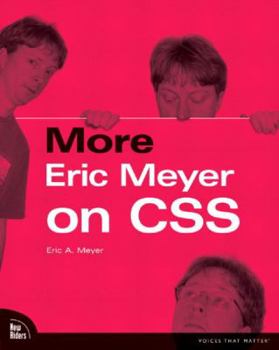More Eric Meyer on CSS
Includes 10 projects designed to encourage you to incorporate CSS into your sites and take advantage of the design flexibility, increased accessibility, decreased page weight, and cool visual effects... This description may be from another edition of this product.
Format:Paperback
Language:English
ISBN:0735714258
ISBN13:9780735714250
Release Date:April 2004
Publisher:New Riders Publishing
Length:304 Pages
Weight:1.95 lbs.
Dimensions:0.7" x 7.9" x 10.0"
Customer Reviews
customer rating | review
There are currently no reviews. Be the first to review this work.













